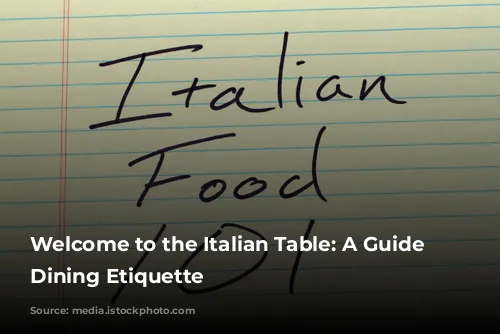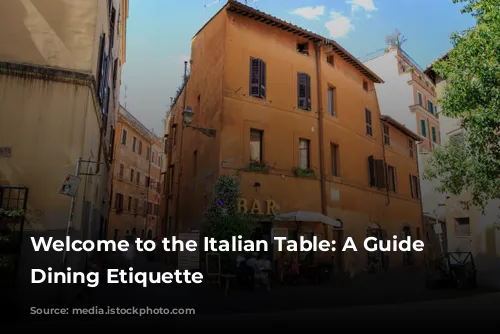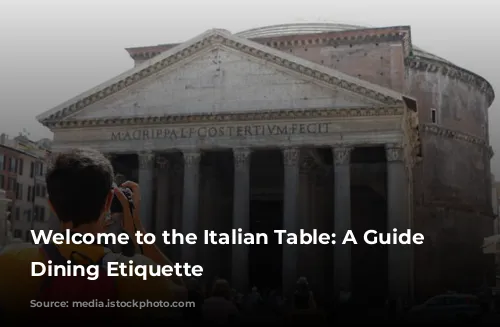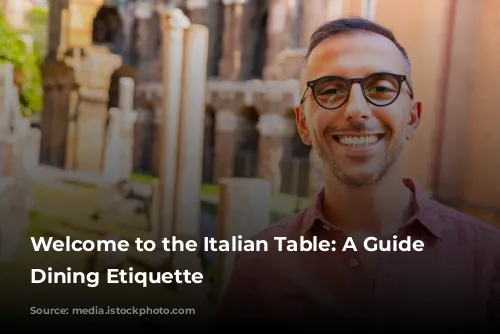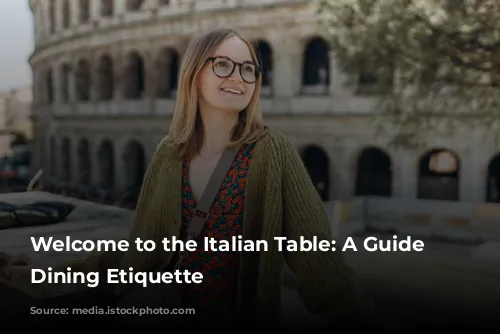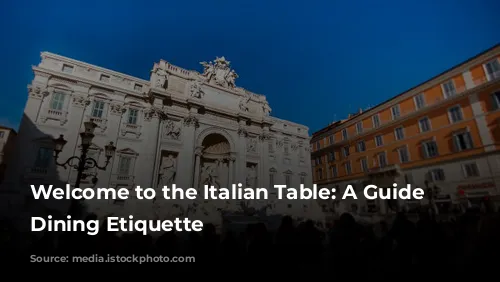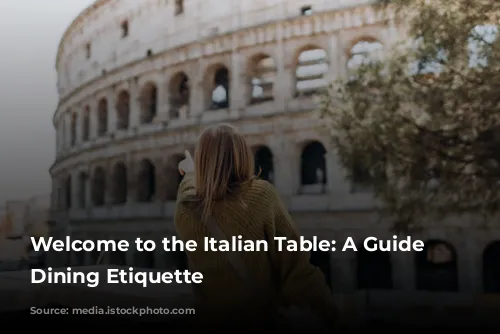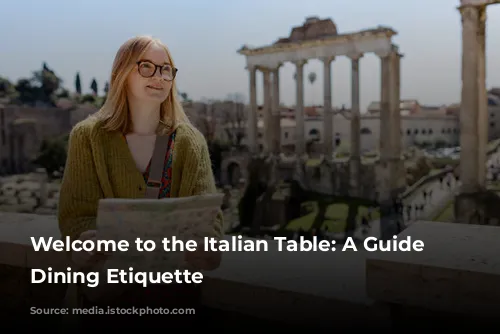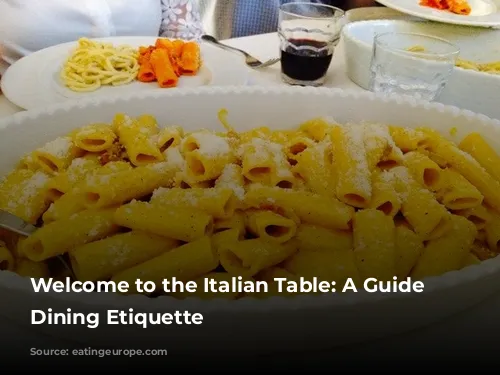Italy, the land of delicious food and vibrant culture, welcomes visitors from around the world with open arms and even more open tables. But navigating the Italian dining scene can be a little daunting, especially if you don’t speak the language. Fear not, fellow food enthusiasts, this guide is here to help you seamlessly navigate your way through a memorable Italian dining experience.
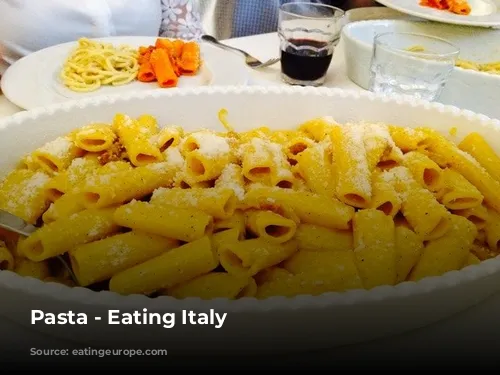
Greetings and Seating
Italians value courtesy and politeness. Upon entering a trattoria, greet the staff with a friendly “Buongiorno” (good morning) before 3 pm, or “Buonasera” (good evening) after 3 pm. A simple “Salve” (hello) is a safe and universal greeting that works at any time of day. Avoid using “Ciao” with strangers, as it’s considered informal.
Once you’ve greeted the staff, confidently ask for a table with “Possiamo avere un tavolo?” (Can we have a table?).
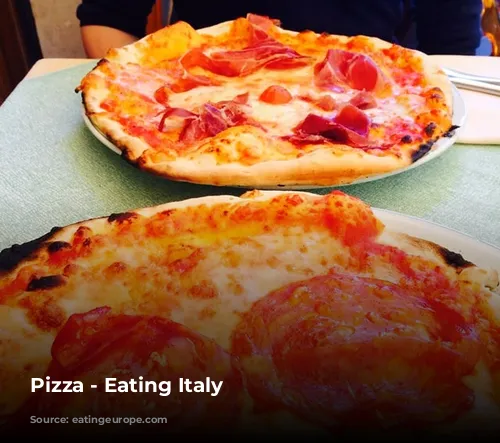
Navigating the Menu
The first question your waiter is likely to ask is whether you’d prefer sparkling or still water: “Gassata o naturale?” A great answer is “Una e una” (one of each). And don’t be shy to ask for the wine list: “Mi porta la carta dei vini?” (Can you bring me the wine list?).
Italian menus are usually divided into distinct sections: antipasti (appetizers), primi (pasta and soups), secondi (meat and fish), contorni (side dishes), and dolci (desserts). You’re not obligated to order every course, so feel free to choose what appeals to you. However, remember to order your wine after you’ve chosen your meal.

Beyond the Ordinary: A Pasta Primer
The antipasti is a true delight, offering an array of sumptuous small dishes that will tantalize your taste buds. You can request a “Possiamo avere un antipasto misto?” (Can we have a mixed appetizer?) for a delightful sampling of the best dishes.
Moving on to the pasta course, or primi piatti, you’ll encounter a vast world of Italian pasta. While many are familiar with spaghetti, fettuccine, penne, and tortellini, Italy boasts over 235 types of pasta. Here’s a peek into some of the unique and delicious varieties you might encounter:
- Tonnarelli: These are not tiny tuna, but a type of square-shaped spaghetti. Try the tonnarelli cacio e pepe (with cheese and black pepper) for a classic flavor experience.
- Strozzapreti: Literally meaning “strangles a priest,” this handmade pasta is the length of a thumb and has a history tied to the clergy’s love for this hearty dish. Made with simple flour, salt, and water, it’s often enjoyed with strozzapreti al sugo di cinghiale (with wild boar sauce).
- Bucatini: This tube-like spaghetti with a hole in the middle is perfect for absorbing flavorful sauces. The bucatini all’amatriciana (with cured pork, pecorino cheese, and tomato) is a must-try classic.
- Mezze Maniche: Translating to “short sleeves,” this short pasta features striations that help it hold onto sauce. A delicious choice is mezze maniche ai frutti di mare (with seafood).
- Gnocchi: These soft, pillowy dumplings are traditionally made with potatoes. Try the gnocchi con ragù (with a rich meat and tomato sauce) for a satisfyingly hearty dish.
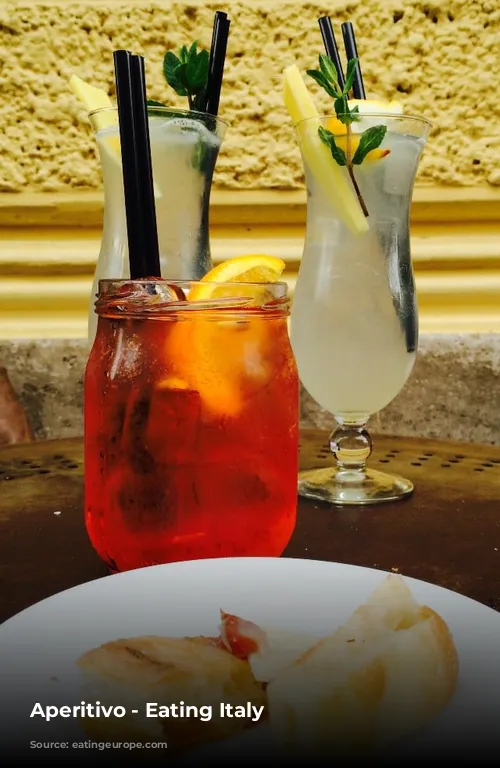
Main Course and Beyond
If you choose a second dish (secondi), you might consider asking for the meat and pasta to be served together with “Può portare tutto insieme?” (Can you bring everything at the same time?).
Italian cuisine offers an abundance of delicious meat and fish options. Pork, including porchetta (roasted pork) and salsiccia (sausage), is a popular choice. Of course, with Italy’s proximity to the sea, fish like baccalà (salted cod) and scampi (shrimp) are also excellent choices. And don’t forget about chicken, like fettina panata (breaded cutlets), and beef, especially the famous Fiorentina (T-bone steak).
For vegetables or roast potatoes to accompany your main course, remember that these are usually not served with the dish but must be ordered separately as a contorno (side dish).

Sweet Endings and Coffee Culture
When it comes to dessert, indulge in the sweet delights of Italy! Millefoglie (Napoleon pastry) and tiramisu are always safe bets. But venture beyond the classics with torta della nonna (grandma’s cake) or a tartufo (truffle-shaped ice cream confection).
After your meal, enjoy a traditional Italian coffee. DO NOT ask for a cappuccino. Italians reserve this for breakfast, believing that the high milk content slows digestion. A caffé macchiato, a small espresso with a touch of milk, is a delicious and acceptable alternative.
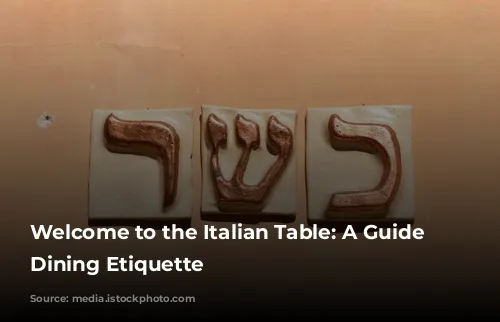
Paying the Bill and Saying Goodbye
It is considered etiquette to request the check by saying “Il conto per favore” (the check, please). Don’t be afraid to ask!
As you leave, remember to thank your server and say goodbye with “Grazie e arrivederci”.
Enjoy your Italian culinary adventure!
